Ever wondered how to start a lawn care business that could potentially earn you six figures a month?
If the idea of being your own boss while working outdoors excites you, you’re in the right place.
Starting a lawn care business involves more than just lawn mowing. It’s about creating a legal business entity, understanding lawn care service prices, and delivering exceptional customer service.
In this all-inclusive guide, I’ll take you through the nitty-gritty of how to start your own lawn care business – from selecting the right equipment to mastering the fine art of lawn maintenance.
Let’s start.
How To Start a Lawn Care Company From Scratch
Take a look at these nine steps to starting a lawn care business:
Plan your services.
Consider your budget.
Buy equipment.
Create a business plan.
Register your business.
Set a pricing strategy.
Hire employees.
Build your business processes.
Market your lawn care business.
I’ll detail each one below to help you learn how to start a yard work business effectively.
1- Plan Your Services.
Starting a lawn care business involves more than just mowing lawns.
Your services range from basic grass cutting to more specialized services like tree trimming, fertilization, snow removal, gutter cleaning, and other yard services.
The key is identifying what services you can and want to offer, considering various factors like budget, skills, and market demand.
How To Choose Services
You’ll have to consider the following factors to decide on the initial services of you lawn business.
Budget
Your budget will determine the kind of machinery, materials, and supplies you can afford.
For instance, if you’re operating on a shoestring budget, you might start with basic mowing services and gradually add more specialized services as your business grows.
Skills and Knowledge
Your expertise in lawn care will also dictate the services you can offer. As a seasoned lawn care professional, you might venture into more specialized services like tree trimming or fertilization.
However, for a new lawn care business, starting with the basics can suffice. You can start adding services as you gain more experience and knowledge.
Demand
Conduct market research to determine what services are in high demand in your area.
For example, services like leaf removal or yard clean-up might be more lucrative if you’re in a region with many older residents.
2- Consider Your Budget.
When you’re figuring out how to start a lawn mower business, one of the most critical steps is to consider your budget carefully.
Understanding your financial needs and constraints will help you make informed decisions and allocate funds appropriately.
Below is a table outlining the various types of expenses you can expect:
| Type of Expense | Estimated Cost | Notes |
|---|---|---|
| Equipment Purchase | $2,000 – $15,000 | Mowers, trimmers, blowers |
| Business License | $50 – $400 | Varies by state |
| Insurance | $500 – $1,200/year | General liability, equipment insurance |
| Marketing | $200 – $1,000/month | Flyers, website, social media ads |
| Employee Wages | $10 – $20/hour | Depending on experience and location |
| Rent | $0 – $2,000/month | If you’re not operating from home |
| Utilities | $100 – $500/month | Electricity, water, internet |
| Software | $0 – $100/month | Scheduling, invoicing software |
| Inventory | $100 – $500/month | Fertilizers, seeds, etc. |
| Gas | $50 – $200/week | For equipment and transportation |
| Taxes | Varies | Income tax, employment tax, etc. |
Start-Up Costs
The initial investment is often the most daunting part when first learning how to start a grass cutting business.
You’ll need to purchase equipment like mowers, trimmers, and blowers, which can range from $2,000 to $15,000, depending on the quality and brand.
You might also have to purchase a vehicle that can transport your crew and your equipment.
Don’t forget that a business license costs money, too. The exact fee varies by state but can be between $50 and $400.
Fixed Monthly Costs
These are the costs that you’ll incur every month, regardless of how much business you do:
Employee Wages: If you plan to hire help, you’ll need to budget for their wages, ranging from $10 to $20 per hour, depending on experience and location.
Rent: If you’re not operating your lawn care company from home, you’ll need a place to store your equipment. Rent can vary widely depending on your location.
Utilities: Expect to pay for electricity for charging equipment, water for cleaning, and internet for managing your online presence.
Software Subscriptions: Scheduling and invoicing software can streamline your operations but comes at a monthly cost.
Insurance: General liability and equipment insurance are must-haves for lawn care businesses.
Variable Ongoing Costs
These are costs that can fluctuate based on the volume of your business:
Inventory: You’ll need to keep a stock of fertilizers, seeds, and other supplies.
Gas: This is for your equipment and any vehicles you use.
Taxes: You must also pay income tax, employment tax, and any other local taxes.
3- Buy Equipment.
When you’re learning how to start a lawn mowing business, acquiring the right lawn care equipment is a pivotal step.
The tools and machines you choose will impact the quality of your service, labor costs, and efficiency.
What do you need to start a lawn care business?
Here’s a comprehensive list of equipment you may need to get your lawn care service up and running:
Essential Tools and Machines
Riding Lawn Mower: Almost necessary for larger properties. It speeds up the job and reduces labor costs.
Push Mower: Ideal for smaller lawns and tight spaces where a riding mower can’t go
String Trimmer: For edging and getting grass, your mower can’t reach
Leaf Blower: Useful for clearing leaves, grass clippings, and other debris
Edger: For creating clean lines around driveways and walkways
Hedge Trimmer: For shaping and maintaining bushes and hedges
Pruners: For smaller trimming jobs
Aerator: For lawn aeration services, usually a seasonal business
Sprayers: For applying fertilizers and pesticides
Spreader: Evenly distributing seeds, fertilizers, and other lawn care products
Rakes and Shovels: For various manual tasks
Gloves, Goggles, and Other Safety Gear: To protect yourself while working
Vehicles
Truck or Van: To transport your equipment and crew
Trailer: For larger jobs
Additional Items
First Aid Kit: For small accidents
GPS and Software: For route planning and job details
Business Cards and Flyers: For attracting new clients and networking with local businesses
4- Create a Business Plan.
A business plan serves as the roadmap for your lawn care operations. It’s a proposal that outlines your business goals, target market, financial projections, and the necessary equipment you’ll need.
The guide will help you with both day-to-day tasks and long-term plans. It will help you make smart decisions, keep track of your business accounts, and turn your business into a profitable one.
As a lawn care business owner, here are the most important parts of your business plan.
Executive Summary: A brief overview of your business
Business Description: What you do and what makes you different
Market Analysis: Information about your target market and competitors
Organization and Management: Your business structure and team
Service Line: Detailed descriptions of the lawn care services you’ll offer
Sales and Marketing: How you plan to attract customers and what marketing tools you’ll use
Funding Requirements: Your financial needs
Financial Projections: Expected income, expenses, and profitability
Appendix: Any additional necessary documents like charts, images, or other relevant material
Why You Should Create a Business Plan.
Risk Mitigation: A business plan helps you foresee potential pitfalls and how to avoid them.
Financial Planning: It helps you understand the costs involved, from purchasing lawn care equipment to operational expenses.
Attract Investors: A well-crafted plan can attract investors and help secure loans.
Guide for Growth: It serves as a blueprint for scaling your business, whether you’re targeting residential or commercial clients.
Know Your Target Market.
Conduct market research to identify your target customers and their demographics, preferences, and pain points. This will help you tailor your services and guide your marketing strategies.

You can use market research tools like Google Trends to learn more about your audience and what they need.
Set Your Goals.
Setting both short-term and long-term goals is essential for the growth of your lawn care business.
Whether expanding your service offerings, scaling to new locations, or increasing your online business presence, having clear objectives will keep you and your team focused.
Define Your Brand.
Your brand is more than just a logo; it’s what people think of when they hear your business name. It’s built on the quality of service, customer experience, and how you present yourself online and offline.
5- Register Your Business.
If you’re a new business owner, registering your business is a crucial step that legitimizes your operations and protects your personal assets.
This process involves several key steps, each with its set of considerations and requirements.
It might seem like a lot of paperwork and initial costs, but it’s essential for protecting your personal finances and establishing your business as a separate business entity.
Choose a Business Name.
Selecting the right name for your lawn care company is more than just a creative exercise; it’s a critical part of your brand identity. Here are some tips on what makes a suitable business name:
Relevance: The name should relate to lawn care services.
Uniqueness: Make sure another business doesn’t already register the name.
Simplicity: It should be easy to spell and remember.
Scalability: Choose a name that won’t limit your business as it grows.
Choose a Business Structure.
Your choice of business structure will affect your taxes, liability, and even how you can raise capital. Here’s a table summarizing the pros and cons of different business structures:
| Business Structure | Pros | Cons |
|---|---|---|
| Sole Proprietorship | Easy to start, full control, simple taxes | Personal liability, limited capital |
| LLC | Limited liability, tax flexibility | Costs money to set up, more paperwork |
| Partnership | More resources shared responsibility | Joint liability, potential for conflict |
| Corporation | Limited liability, easier to raise capital | Complex regulations, double taxation |
Secure Your Licenses and Permits.
Most lawn care businesses will need a general business license and possibly some permits to operate legally, depending on your locality and the services you offer. Always check local, state, and federal requirements.
Register for Taxes.
You’ll need to register for various state and federal taxes. This often involves applying for an Employer Identification Number (EIN) from the IRS.
You can get an EIN for your business online, which is free.
Get Insurance.
Insurance is non-negotiable when you’re starting a lawn care business. Here are the types of insurance you’ll likely need:
General Liability Insurance: Covers injuries or client’s property damage.
Commercial Vehicle Insurance: For any business-owned vehicles.
Workers’ Compensation: If you have employees, this is usually mandatory.
Equipment Insurance: Protects your lawn care equipment.
Professional Liability Insurance: This covers you against professional errors.
6- Set a Pricing Strategy.
Your pricing affects your profitability and how you’re perceived in the market. Let’s explore the factors that should influence your pricing strategy and examine some popular pricing models.
Factors Influencing Pricing Strategy
Here are some key factors that should guide your pricing:
Target Audience: The pricing may vary based on the client type.
Demand: A high demand for lawn care services in your area can allow you to charge more.
Ongoing Expenses: Consider your fixed and variable costs, such as employee wages, equipment maintenance, and insurance.
Competition: Know what your competitors are charging and position your services accordingly.
Job Complexity: More complex jobs like tree trimming or specialized services will naturally cost more.
Sample Computation
Let’s assume you have the following expenses per job:
Labor: $20 per hour
Equipment: $10 per hour
Overheads: $5 per hour
Your total cost per hour would be $35. To determine an hourly rate that would give you profits, we’ll use this formula:
Hourly Rate = Total Cost per Hour × (1 + Profit Margin)
If you aim for a 20% profit margin, your hourly rate would be: $42
Pricing Models
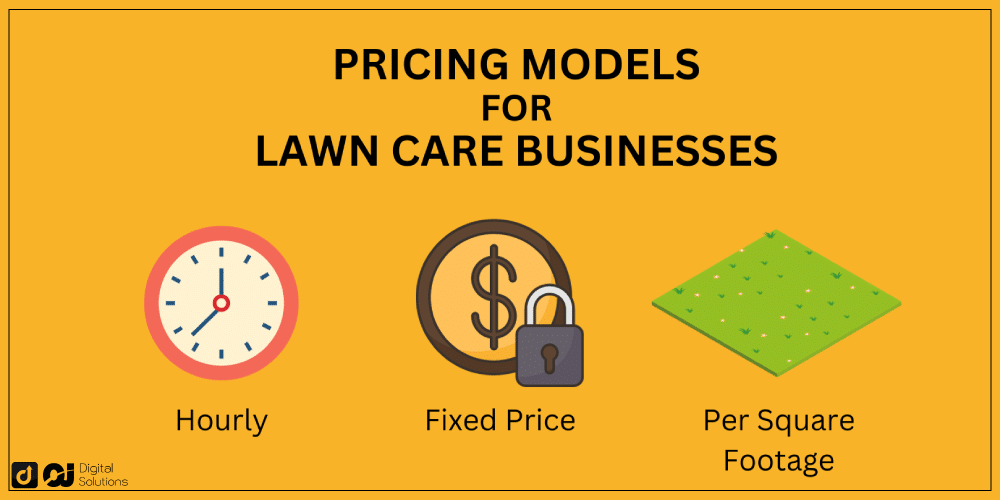
Different jobs and client expectations may require different pricing models. Here are some you might consider:
Hourly
Pros: Easy to calculate and justify to the client.
Cons: May not be suitable for larger, more complex jobs.
Fixed
Pros: Clients know the total cost upfront, which can be reassuring.
Cons: If the job takes longer than expected, it can affect your profits.
Per Square Footage
Pros: This can be a fair method for both parties for larger projects.
Cons: Requires accurate measurement and can be time-consuming to calculate.
7- Hire Employees.
Lawn care companies depend entirely on their staff and workers. You can only find success if they’re efficient, skilled, and good at handling customers.
Why do you need good employees?
Increased Productivity: Skilled and motivated employees can do more in less time.
Customer Satisfaction: Good employees treat customers well, leading to repeat business and referrals.
Lower Turnover: Hiring right the first time saves the cost and hassle of frequent rehiring.
Important Factors for Hiring Lawn Care Professionals.
Skill Level: Look for employees who have experience or are quick learners.
Reliability: Punctuality and dependability are key traits.
Customer Service Skills: Employees often interact with clients, so good communication skills are essential.
Physical Fitness: The job can be physically demanding.
Background Checks: Always conduct background checks to ensure the safety of your clients and your business.
8- Build Your Business Processes.
Creating efficient business processes is crucial for the smooth operation of your lawn care business and for ensuring customer satisfaction. Leveraging modern technology can help you automate and optimize these processes. Here’s how:
Bidding and Quotations
This involves calculating the cost of a job and providing a detailed quote to the client. Consider using software like Jobber or Service Autopilot to create professional and accurate quotes.
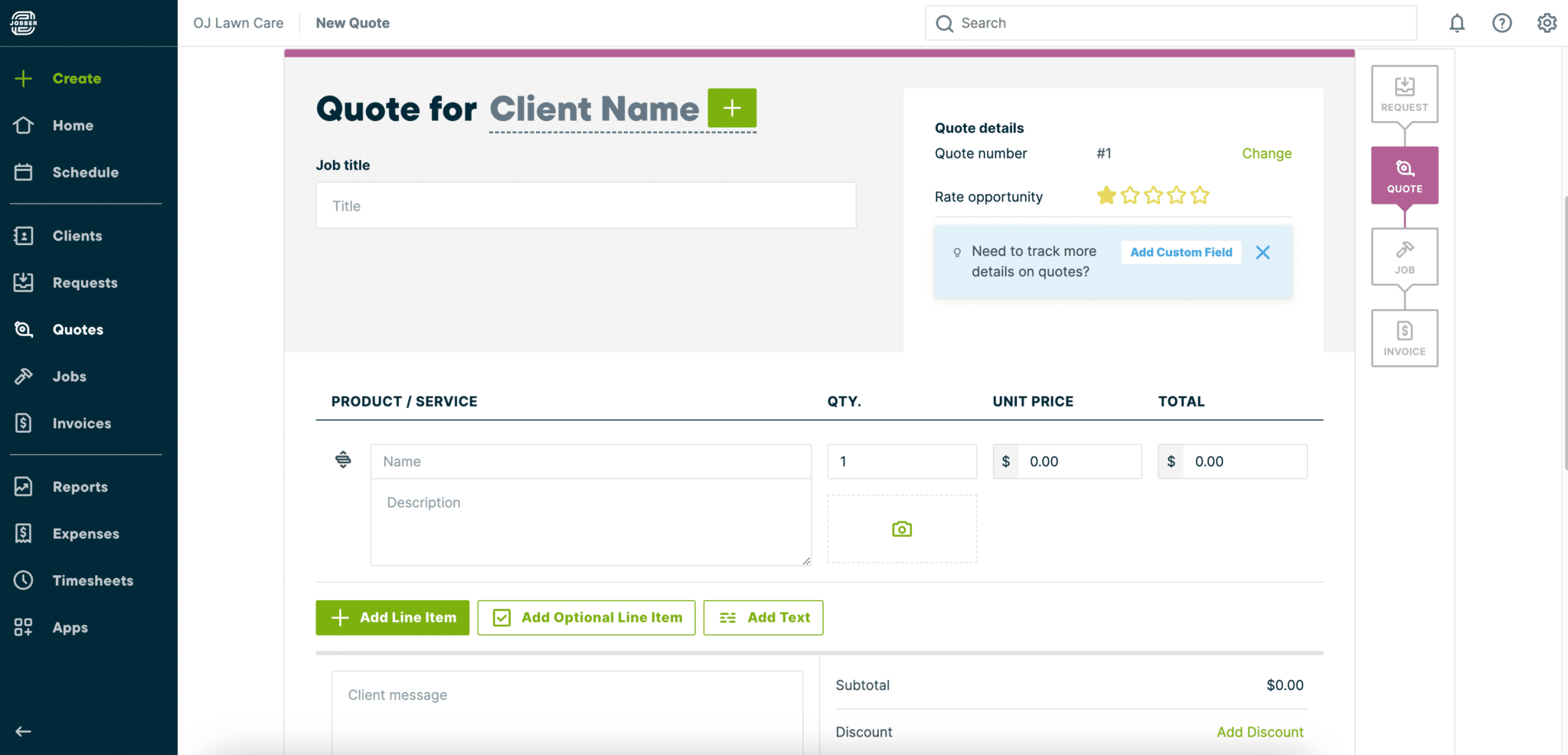
Always include a breakdown of services, material costs, and labor to make your quotes transparent and trustworthy.
Invoices and Payments
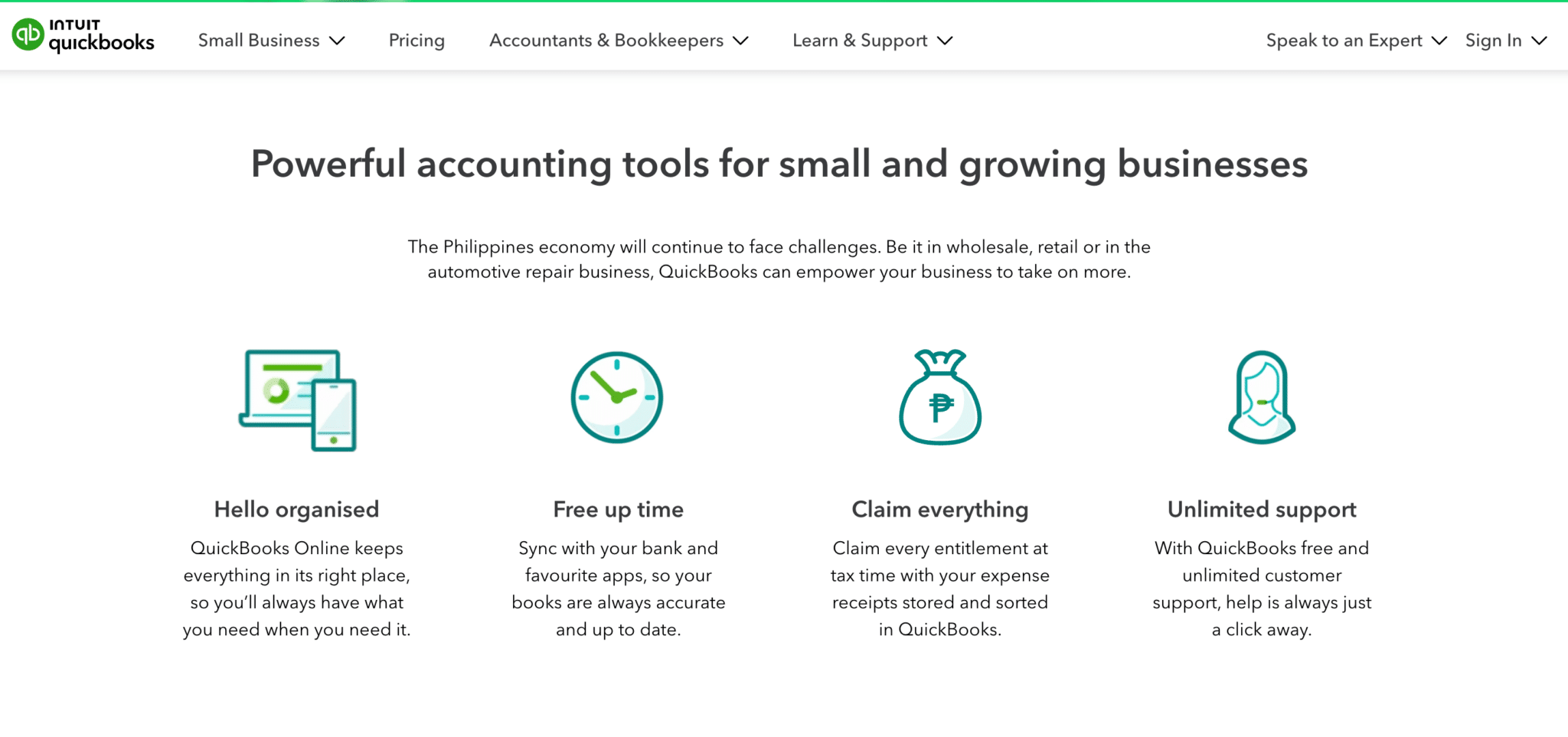
This means charging the client and making sure they pay on time. QuickBooks and FreshBooks offer invoicing solutions that allow clients to pay directly online.
Offer multiple payment options like credit cards, digital wallets, and bank transfers to make it convenient for clients.
Worker Scheduling
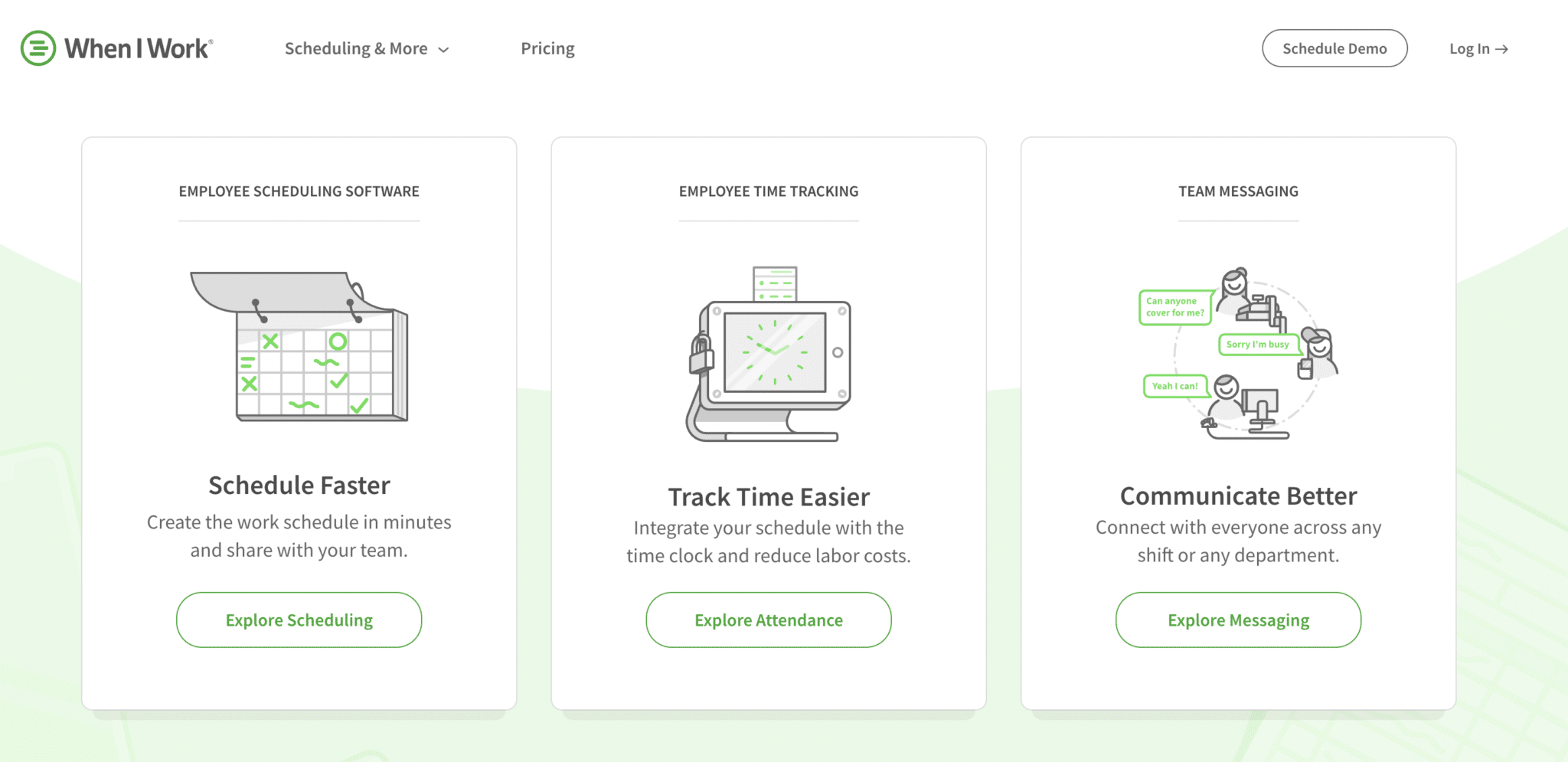
Planning your employees’ work schedules to ensure optimal productivity. Deputy or When I Work are excellent scheduling software that allows employees to clock in and out.
Use software features to track hours worked and to manage overtime efficiently.
Client Scheduling
This means arranging for clients to receive services and handling cancellations or rescheduling. Calendly or Acuity Scheduling allows clients to book and reschedule appointments online.

Use automated reminders to reduce no-shows and last-minute cancellations.
Client Information
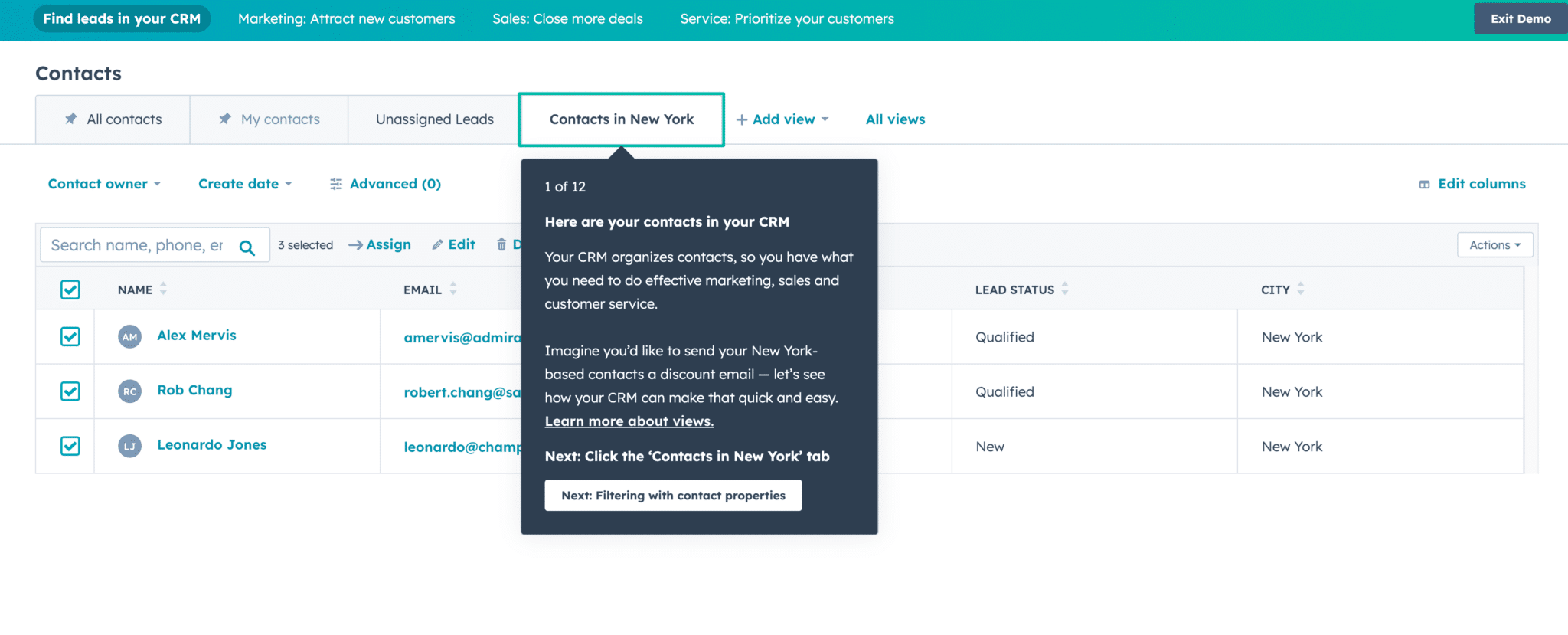
Keeping track of client information is vital for personalized service. Salesforce Customer 360 or HubSpot CRM can help you store all client information, including their preferences and feedback.
Regularly update the CRM with client interactions, completed jobs, and feedback for future reference.
Safety Protocols
Implementing safety protocols is essential to protect both your employees and clients. Conduct regular trainings, and ensure everyone on the team is updated on any recent changes in machineries and services.
All employees must also have necessary safety gear and training in emergency procedures.
Equipment Maintenance
Regular maintenance ensures your equipment is always in optimal condition. To avoid unforeseen breakdowns, schedule regular inspections and keep a log of all maintenance operations.
9- Market Your Lawn Care Business.
Marketing your lawn care business effectively involves a multipronged approach that leverages both online and offline channels.
Here are some tips to marketing your own lawn care business.
Create a Website.
A professional website serves as your business’s digital storefront, offering credibility and visibility. It’s the go-to place for potential customers to find all the information they need about your services.
Here are some important aspects of a website:
Domain Name: Choose a name that reflects your business and is easy to remember.
Hosting Plan: You need a hosting service for your website. We recommend BlueHost and HostGator for reliable services.
Website Builder and Design: Use platforms like WordPress or Wix that offer various design templates.
Content: Include a blog section for SEO, a portfolio of your work, and customer testimonials.
Contact Information: Make it easy for visitors to contact you.
Build Your Social Media Presence.

Social media platforms like Facebook, Instagram, LinkedIn, and Twitter offer unique ways to engage with different demographics.
They’re invaluable tools for showcasing your work and interacting with both potential and existing customers.
Facebook: Great for all age groups
Instagram: Ideal for showcasing your work visually
LinkedIn: Good for B2B and professional networking
Twitter: Useful for quick updates and customer engagement
Do Local Content Marketing.
Focusing on local SEO and content marketing helps you target customers in your specific geographic area.
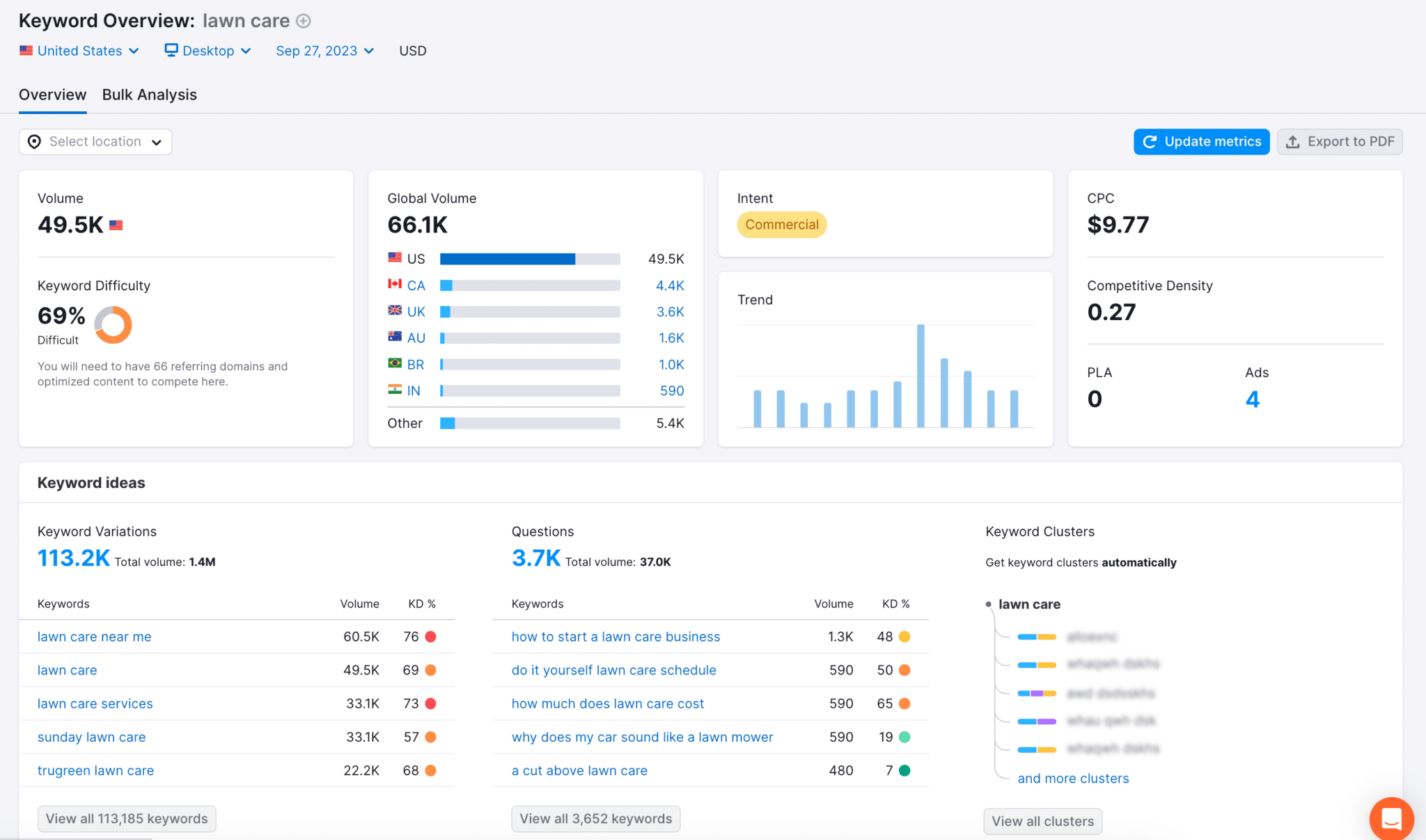
Utilizing SEO tools like SEMrush or Google Keyword Planner can further refine your strategy, making sure you’re reaching the right audience.
Market Your Business Locally.
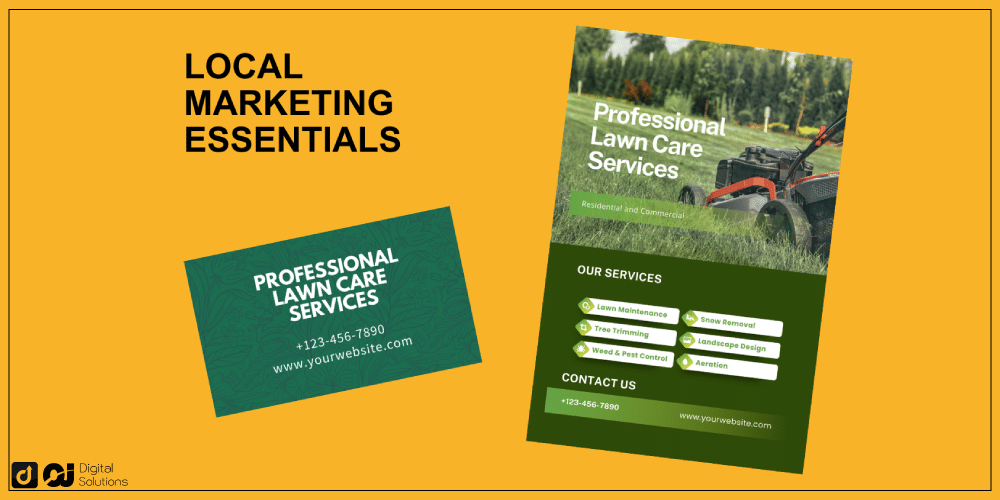
Use traditional methods like flyers, business cards, and community boards to raise awareness in your area.
Leverage Customer Feedback.
Getting testimonials and reviews help establish trust and solidify your credentials.
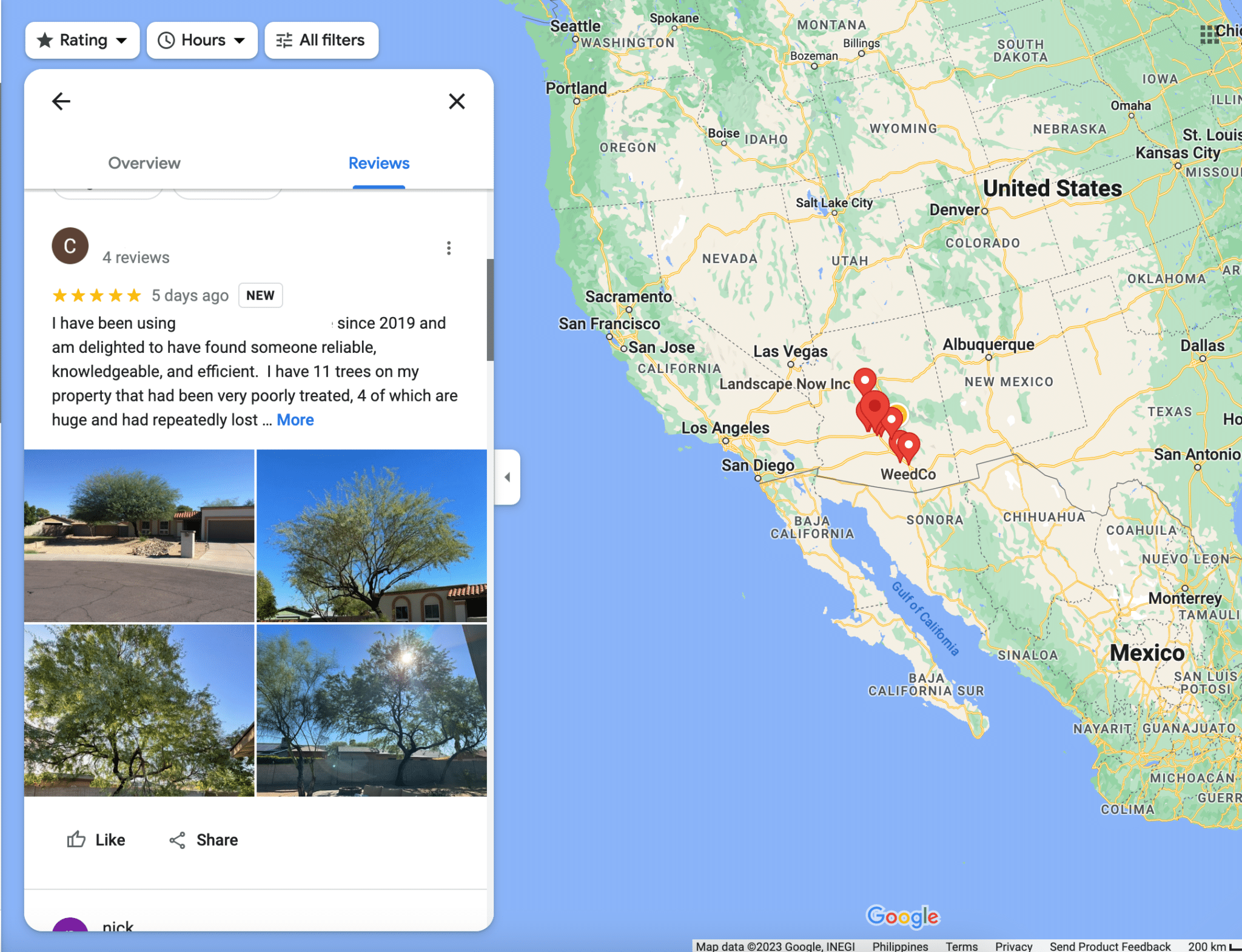
Use platforms like Google Business Profile (formerly Google My Business) to gain positive feedback and post it on your social accounts.
Consider Paid Ads.
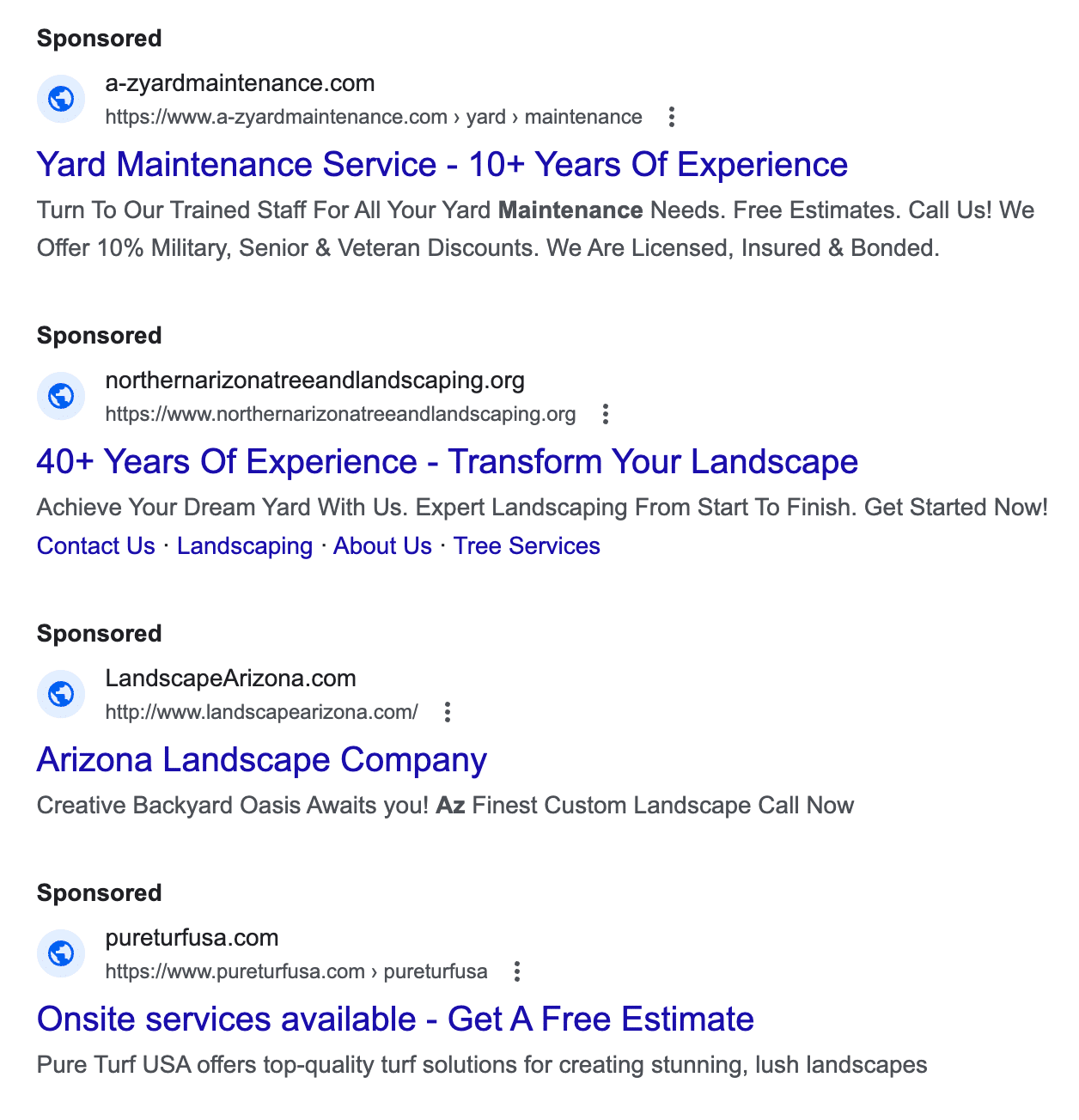
Invest in paid advertising through Google Ads, Facebook Ads, and even local newspapers to reach a broader audience. These may be costly, but it can get the word out there for your business.
How Much Can You Earn From a Lawn Care Business?
According to various industry reports, the average lawn care business can make anywhere from $50,000 to $100,000 in its first year. This figure can significantly increase as you gain more experience and expand your client base.
Here’s a sample computation:
Let’s say you charge $50 per lawn and have 10 lawns to mow each week.
That’s $500 per week or $2,000 per month.
If you operate for 8 months a year (considering seasonality), you could make $16,000 from just mowing lawns.
Add other services like fertilization, aeration, and landscaping; your profits could soar.
However, some factors that might affect your profits are:
Competition: The more saturated the market, the harder it will be to attract customers.
Number of Clients: More clients mean more income but also more work.
Cost of Your Services: Pricing too high or too low can affect profitability.
Operational Costs: Gas, equipment maintenance, and lawn care employees can eat your profits.
Seasonality: Some services are only needed at certain times of the year.
Should You Start a Lawn Care Business? Pros and Cons
Starting a lawn care business can be lucrative, but it has some challenges. Let’s look at some pros and cons to give you a balanced view.
| ✅Pros | ❌Cons |
|---|---|
| Repeat Business | Seasonality |
| Low Startup Costs | Weather |
| Scalability | Competition |
Benefits
Repeat Business: Lawn care is ongoing; your existing customers will likely need your services regularly.
Low Startup Costs: Initial expenses are relatively low, especially if you already have some basic equipment.
Scalability: As you gain more clients and invest in more equipment, you can easily scale your business.
Challenges
Seasonality: The demand for lawn care services can be seasonal, affecting your income.
Weather: Bad weather can halt operations, leading to income loss.
Competition: Depending on your area, you may have to deal with more competition as this is a relatively easy business to start.
How To Run a Lawn Care Business for Success: 8 Tips
Running a successful lawn care business involves more than just cutting grass.
Here are eight tips that can help you sustain and grow a profitable business.
1. Upsell and Follow Up.
The best way to start a lawn care business is by offering basic services and upselling additional services your clients may need.
For example, if you’re already mowing a lawn, offer to fertilize it or provide seasonal clean-up services.
Always follow up after delivering your services to ensure customer satisfaction and discuss additional needs.
2. Communicate Effectively with Your Clients.
Communication is key in any business, especially in a service-oriented one like lawn care. From the initial inquiry to after-sales service, maintaining open lines of communication can set you apart from the competition.
Use various channels like phone calls, emails, or even social media to keep your clients informed and satisfied.
3. Focus on Current Clients.
While acquiring new customers is essential, don’t overlook your existing ones.
Retaining a current client costs less than acquiring a new one. Start small and focus on offering exceptional service to your current clients.
Repeat business is often easier to get and more profitable eventually.
4. Keep Learning.
The lawn care industry is constantly evolving. Stay ahead of other lawn care business owners by keeping track of industry trends, new products, and innovative processes.
Whether it’s a more efficient mower or eco-friendly fertilizers, being in the know can give you an edge and make your small lawn care business stand out.
5. Create Flexible and Efficient Work Schedules.
Efficiency is crucial when you’re running a lawn care company. Create work schedules that are not only flexible but also efficient.
Use route optimization software to minimize travel time and fuel expenses, allowing you to serve more clients in less time.
6. Create a Streamlined Invoicing and Payment Process.
Cash flow is the lifeblood of any business. Make sure your invoicing and payment processes are as streamlined as possible.
Use software that allows you to send invoices electronically and offers multiple payment options to make it convenient for your clients.
7. Organize Your Customer Information.
Keeping track of customer information is crucial for effective service delivery and marketing. Use a Customer Relationship Management (CRM) system to store essential details like service history, preferences, and even the specific grass types of each lawn you service.
8. Integrate the Right Tools and Technologies.
Leveraging the right tools and technologies can make running your business much easier. From scheduling software to drones for aerial lawn surveys, the right tech can save you time and money.
Frequently Asked Questions (FAQs)
What Is the Best State To Start a Lawn Care Business In?
The best state to start a lawn care business depends on factors like climate, demand, and competition. States with warmer climates tend to have a longer lawn care season, which can be beneficial for your lawn care business startup.
However, you’ll also want to consider the level of competition and the average income in the area. Researching local market conditions can help you make an informed decision.
Do I Need a License To Apply Fertilizer?
It often depends on your operating state. Some states require a specific license or certification for applying fertilizers and other chemicals.
You must check your state’s regulations to ensure you’re compliant. Failing to adhere to state laws can result in fines or even the closure of your business.
Do I Need a License To Mow Lawns?
In most states, you don’t need a specific license just to mow lawns. However, you’ll likely need a general business license to operate.
Some local governments may also have additional requirements, so it’s best to check with your local and state authorities to know what you need to start a lawn care business legally.
What Is Most Profitable for a Landscaping Business?
Specialized services like tree trimming, hardscaping, and seasonal clean-ups often yield higher profit margins than basic lawn maintenance.
Offering various services can be the best way to start a lawn care business that is both profitable and resilient.
How Much Does Lawn Care Cost?
Basic lawn maintenance can range from $30 to $80 per visit. More specialized services like fertilization, aeration, or tree trimming will cost extra.
However, the cost of lawn care services can vary widely depending on the location, the services offered, and the job’s complexity.
What Are Some Tips for Starting a Lawn Care Business?
To set up your lawn care business for success, follow these tips:
Understand your target market and tailor your services accordingly.
Invest in high-quality equipment for efficiency and reliability.
Excellent customer service can set you apart from the competition.
Know your costs and set your prices to ensure profitability.
A website and social media accounts are essential for marketing your services.
What Do You Need to Start a Lawn Mowing Business?
Starting a lawn mowing business requires more than just a lawnmower. Here’s a rundown of what you’ll need:
Business Plan: A well-thought-out business plan will guide you through each stage of starting and managing your business.
Legal Requirements: Register your business, get the necessary permits, and meet local ordinances.
Equipment: Apart from a reliable lawnmower, you’ll also need other tools like edgers, leaf blowers, and safety gear.
Marketing: A website, social media profiles, and perhaps some local advertising will help you attract your first customers.
Funding: You’ll need some initial investment to cover the cost of equipment, advertising, and other startup expenses.
The Bottom Line
Starting a lawn care business is more than just mowing lawns; it’s a strategic venture that can yield significant financial gains.
From crafting a business plan to securing lawn care business insurance, every step is crucial in learning how to start a mowing business. The market is ripe but competitive, so standing out from other lawn care providers with unique services and excellent customer service is key.
I hope this guide on how to start a lawn maintenance business can help you get started on your business idea on the right foot.
Whether you’re going all-in or starting a side business, providing lawn care services can be both rewarding and lucrative.






